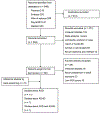Maternal exposure to pesticides and autism or attention-deficit/hyperactivity disorders in offspring: A meta-analysis
- PMID: 36470360
- PMCID: PMC9839607
- DOI: 10.1016/j.chemosphere.2022.137459
Maternal exposure to pesticides and autism or attention-deficit/hyperactivity disorders in offspring: A meta-analysis
Abstract
Objective: To analyze the association between maternal pesticide exposure and autism spectrum disorder (ASD) and attention-deficit/hyperactivity disorders (ADHD) in offspring.
Method: Five databases including PubMed, Embase, Web of Science, Medline, as well as PsycINFO were systematically retrieved for the records related to pesticide exposure during pregnancy and ASD and ADHD in offspring before August 30, 2022. The pesticide category, maternal age and window of exposure as the main subgroups were presented.
Results: 949 studies were initially identified, and 19 studies were eventually included. Eleven were on ASD, seven were on ADHD, and one was on both disorders. Maternal pesticide exposure was positively related to ASD (pooled OR = 1.19 (95%CI: 1.04 to 1.36)) and ADHD (pooled OR = 1.20 (95%CI: 1.04 to 1.38)) in offspring. In the subgroup analysis, organophosphorus pesticides (OPs) (pooled OR = 1.14 (95%CI: 1.04 to 1.24)), pyrethroid (pooled OR = 1.40 (95%CI: 1.09 to 1.80)), and maternal age ≥30 years old (pooled OR = 1.24 (95%CI: 1.10 to 1.40)) increased the risk of ASD in offspring. Maternal organochlorine pesticides (OCPs) exposure was a risk factor for ADHD in offspring (pooled OR = 1.22 (95%CI: 1.03 to 1.45)).
Conclusion: Maternal pesticide exposure increased the risk of ASD and ADHD in offspring. Moreover, OPs, pyrethroid, and maternal age ≥30 years old were found to be risk factors affecting children's ASD. Maternal exposure to OCPs increased the risk of ADHD in offspring. Our findings contribute to our understanding of health risks related to maternal pesticide exposure and indicate that the in utero developmental period is a vulnerable window-of-susceptibility for ASD and ADHD risk in offspring. These findings should guide policies that limit maternal exposure to pesticides, especially for pregnant women living in agricultural areas.
Keywords: ADHD; ASD; Meta-analysis; Pesticides; Pregnancy.
Copyright © 2022 Elsevier Ltd. All rights reserved.
Conflict of interest statement
Declaration of competing interest The authors declare that they have no known competing financial interests or personal relationships that could have appeared to influence the work reported in this paper.
Figures




References
-
- Ameis SH, et al., A Diffusion Tensor Imaging Study in Children With ADHD, Autism Spectrum Disorder, OCD, and Matched Controls: Distinct and Non-Distinct White Matter Disruption and Dimensional Brain-Behavior Relationships. Am J Psychiatry, 2016. 173(12): p. 1213–1222. - PubMed
-
- Kim YS, et al., Prevalence of autism spectrum disorders in a total population sample. Am J Psychiatry, 2011. 168(9): p. 904–12. - PubMed
-
- Polanczyk G, et al., The worldwide prevalence of ADHD: a systematic review and metaregression analysis. Am J Psychiatry, 2007. 164(6): p. 942–8. - PubMed
-
- Simon V, et al., Prevalence and correlates of adult attention-deficit hyperactivity disorder: meta-analysis. Br J Psychiatry, 2009. 194(3): p. 204–11. - PubMed

